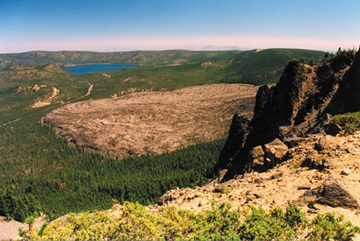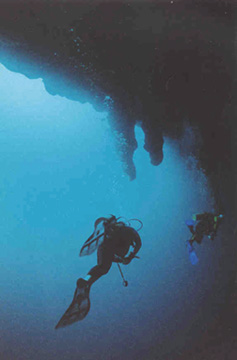Every month, we'd like to feature one of your photos from anywhere in the world and invite other readers to guess where it was taken. Look every month in the print Geotimes for a new photo. Following are clues, answers and winners from past issues.


| Do you have slides and photos
you've collected from field work or vacations?
Every month, we'd like to feature one of your photos from anywhere in the world and invite other readers to guess where it was taken. Look every month in the print Geotimes for a new photo. Following are clues, answers and winners from past issues. |
 |
| Send answers for the March 2003 Where on Earth?
contest, which appears the print magazine, to Geotimes by March 31 (or postmarked
by this date). From those answers, Geotimes staff will draw the names of
10 people who will win Where on Earth? T-shirts. And from those 10 names,
we will draw the names of two people who will win a Brunton
compass.
Click here
to submit a guess for this month's Where on Earth?
contest. Submit
photos for Where on Earth? |

|
Clues:
1. The glassy flow in the center of the picture formed 1,300 years ago in the last eruption of this Quaternary shield volcano, one of the largest volcanoes in its country. 2. This photograph of the summit caldera was taken from the volcano's current high point, a peak named for a local chieftain who, one might surmise, was no stranger to peril. 3. The town just to the north has an unbreakable name that stems from a curve in the adjacent river.
Scroll down for the answer
|
|
Answer:
Newberry Volcano; Oregon, United
States |
March Winners:
1. John W. Boyd (Prescott, Ariz.)
2. Daniel Deborde (Tucson, Ariz.)
3. Peter Druschke (Las Vegas, Nev.)
4. Richard W. Galster (Edmonds, Wash.)
5. Neal Jacques (Seahurst, Wash.)
6. Milton R. Marks (Lake Oswego, Ore.)
7. Charna Meth (Alexandria, Va.)
8. Andrew H. Rorick (Sandy, Ore.)
9. Marty Ross (Rockport, Mass.)
10. Todd Shipman (Tucson, Ariz.)

|
Clues:
1. Now underwater, this feature was a subaerially exposed cave during the last Ice Age approximately 18,000 years ago. More than 400 feet deep, it was thought to be bottomless until the French explorer Jacques Cousteau proved otherwise during a 1970 expedition. 2. Researchers are using core samples from stalactites like those pictured to test a hypothesis that relates Saharan desert dust storm activity to the development of algal blooms and other pathogens in this region. 3. The feature’s name and its appearance from the air are similar to that of an astronomical feature with a gravitational field so intense that not even light can escape.
Scroll down for the answer
|
|
Answer:
Great Blue Hole, Lighthouse
Reef Atoll, Belize |
 |
Geotimes Home | AGI Home | Information Services | Geoscience Education | Public Policy | Programs | Publications | Careers |